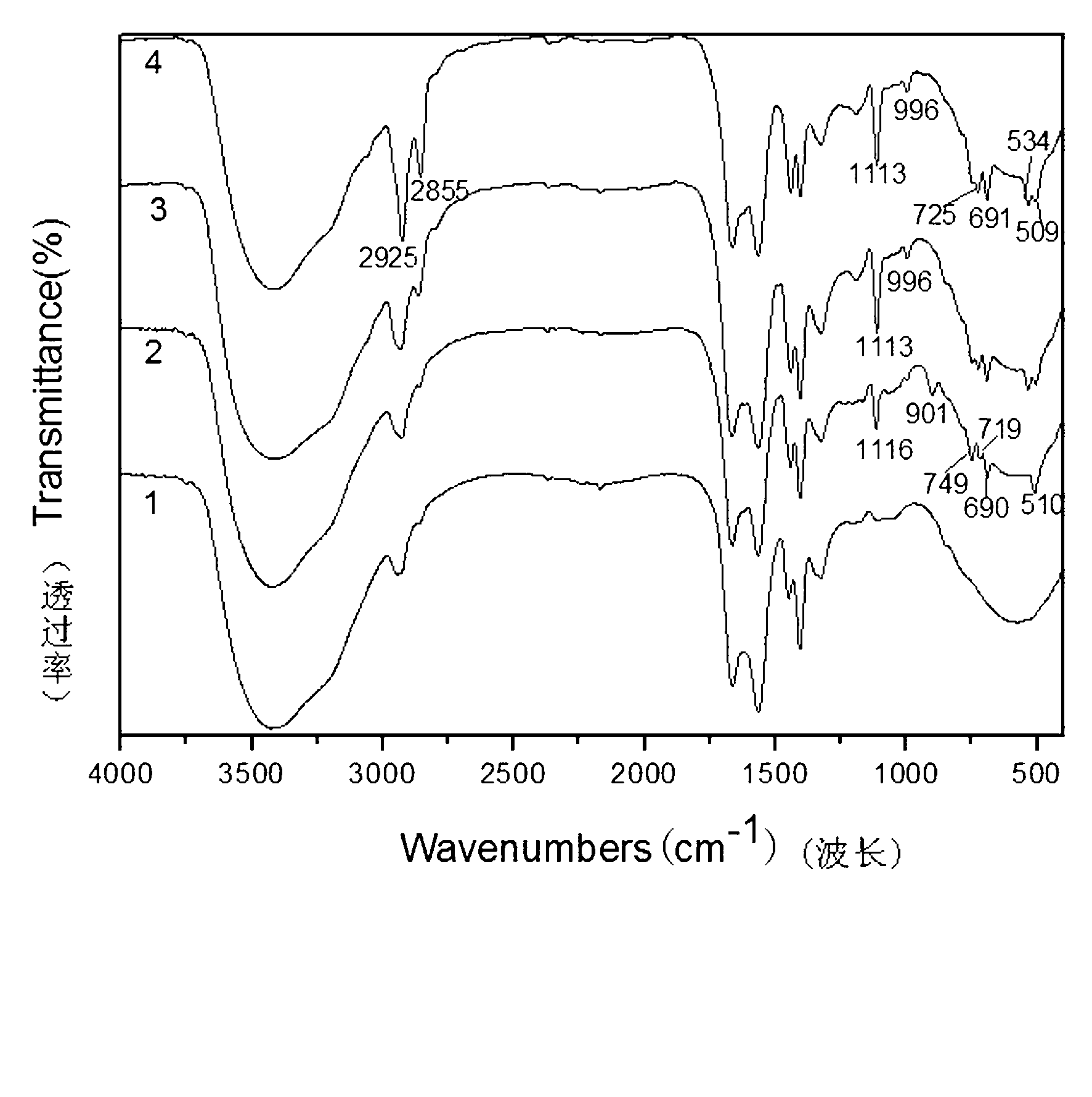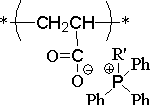Phosphonium salt modified acrylic fibre antibacterial material and preparation method thereof
A technology of polyacrylonitrile fiber and polyacrylonitrile, which is applied in the direction of fiber type, fiber treatment, textiles and papermaking, etc., which can solve the problems of high cost, environmental pollution, and easy aging of resin, and achieve easy operation, environmental friendliness, and energy saving consumption effect
- Summary
- Abstract
- Description
- Claims
- Application Information
AI Technical Summary
Problems solved by technology
Method used
Image
Examples
Embodiment 1
[0023] (1) Add hydrazine hydrate and polyacrylonitrile fibers into the reaction kettle, vacuumize or flush nitrogen in a closed container, heat up and react, and naturally cool down to room temperature after the reaction, and control the fiber weight gain rate. Then add NaOH solution into the reactor, seal the reactor, heat up, wash and dry to obtain Na-type ion exchange fiber.
[0024] (2) Weigh 2.5022g of methyltriphenylphosphonium bromide (0.07mol / L), dissolve it in 100mL of distilled water, stir to dissolve completely; add 0.5g of Na-type polyacrylonitrile fiber, shake and react at 50°C for 8h, so that the fiber is fully After swelling, the resulting product was washed with distilled water until no bromide ions existed (with 0.1mol / L AgNO 3 inspection), and dried to constant weight. The weight of the modified antibacterial fiber is 0.638g, and the content of methyltriphenylphosphonium is 3.02%.
[0025] The samples were analyzed by infrared spectroscopy, and the results ...
Embodiment 2
[0027] The preparation of Na type polyacrylonitrile fiber is as embodiment 1.
[0028] Weigh 0.8526g of hexyltriphenylphosphonium bromide (0.02mol / L), dissolve it in 100mL of distilled water, stir to dissolve completely; add 0.5g of Na-type polyacrylonitrile fiber, shake and react at 30°C for 6 hours to fully swell the fiber, and the obtained product Wash with distilled water until no bromide ion exists (with 0.1mol / L AgNO 3 inspection), and dried to constant weight. The weight of the modified antibacterial fiber is 0.620g, and the content of hexyltriphenylphosphonium is 2.11%.
[0029] The samples were analyzed by infrared spectroscopy, and the results were as follows: figure 1 Shown, compared with the Na-type polyacrylonitrile fiber of curve 1, several characteristic absorption peaks have been added in curve 3 (same as curve 4), 1113cm -1 and 996cm- 1 is the bending vibration absorption peak of the P-Ph bond, , 725cm -1 and 691cm -1 It is the C-P bond stretching vibrat...
Embodiment 3
[0031] The preparation of Na type polyacrylonitrile fiber is as embodiment 1.
[0032] Weigh 5.1043g of dodecyltriphenylphosphonium bromide (0.1mol / L), dissolve it in 100mL of distilled water, stir to dissolve completely; add 0.5g of Na-type polyacrylonitrile fiber, shake and react at 60°C for 4h to fully swell the fiber , the resulting product was washed with distilled water until no bromide ions existed (with 0.1mol / L AgNO 3 inspection), and dried to constant weight. The weight of the modified antibacterial fiber is 0.85g, and the content of dodecyltriphenylphosphonium is 5.03%.
[0033] The samples were analyzed by infrared spectroscopy, and the results were as follows: figure 1 As shown, compared with the Na-type polyacrylonitrile fiber in curve 1, there are several new characteristic absorption peaks in curve 4 (same as curve 3), 1113cm -1 and 996cm -1 It is the bending vibration absorption peak of P-Ph bond, 725cm -1 and 691cm -1 It is the C-P bond stretching vibra...
PUM
 Login to View More
Login to View More Abstract
Description
Claims
Application Information
 Login to View More
Login to View More - R&D
- Intellectual Property
- Life Sciences
- Materials
- Tech Scout
- Unparalleled Data Quality
- Higher Quality Content
- 60% Fewer Hallucinations
Browse by: Latest US Patents, China's latest patents, Technical Efficacy Thesaurus, Application Domain, Technology Topic, Popular Technical Reports.
© 2025 PatSnap. All rights reserved.Legal|Privacy policy|Modern Slavery Act Transparency Statement|Sitemap|About US| Contact US: help@patsnap.com


